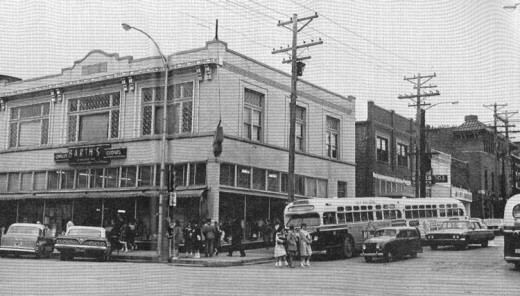Let’s get public transportation back on track | From the Roundtable
As debate proceeds about the upcoming city budget, Mayor Bob McDavid, to his credit, brooks no reluctance to work on ways to clot the flow of red ink incurred by the municipal transportation system. The latest proposal calls for a cutback of $2.7 million for bus replacement and operations at the same time it’s reported that students constitute nearly three-quarters of the system’s ridership. This proposed parsimony, not surprisingly, has many student users rather upset.

Scratch the history of transportation over the past 100 years. Consider all the privately owned and operated electric streetcar and interurban lines that are no more, and ruminate about the urban and interurban bus lines that are either gone altogether or scaled back. Then fondly recall the hundreds of both private and investor-owned railroads whose menu of operations incredibly once included hauling passengers. Today, public transit is invariably subsidized by a welter of public agencies, taxes, grants from all levels of government and specially chartered operating authorities.
Public transportation where I grew up was a daily crisis. It was a smorgasbord of initials and names, destinations and personalities, some of whom turned out to be rather malevolent individuals. There was chatter over breakfast about the IRT, IND and BMT subway lines and chatter about Public Service, MABSTOA, Transit Authority buses and suburban lines identified by their colors: red and tan, orange and black and green. There was chatter about seemingly inevitable delays on the commuter railroads (“The 6:19 out of Stamford is late again due to a signal problem”). Those railroads chronically never made money and were abbreviated as simply the Central, the Pennsy, the Long Island, the New Haven, PATH and a few others: the Lackawanna, Erie and the Susquehanna.

Moving people around Columbia also is expensive. It was mentioned recently that $4 per ride represents the break-even point for each trip taken. At $4 a head, bus ridership would plunge to zero.
Given Columbia’s heavy student patronage, Mayor McDavid is on the right track broaching a cooperative arrangement between the city and the University of Missouri. Cooperation is one thing, but when do we start talking about direct financial participation with the city?
Let’s take this further. Is there an obstacle to creating a city or, perhaps more ambitiously, a regional transportation authority to own and operate the present city bus system? Where New York City once created the Manhattan and Bronx Surface Transit Operating Authority, or MABSTOA, for certain bus lines, would there be any advantage for Columbia to encapsulate its system under a separately constituted transit operating authority that shared expenses with the university and the various student apartment complexes that ring the city?
Let’s expand the realm of investor participants to include downtown Columbia and the principal shopping complexes on the edges of the city. Then, thinking regionally, how about restoring periodic bus service between Columbia and Jefferson City with a stop at the airport as well as perhaps one daily morning and evening commuter run to Boonville and Fayette? Although operating deficits are probably inevitable in any venture that moves people around, there’s no reason why we shouldn’t start thinking and working creatively to come up with ways to lessen the burden and turn our transit operation into a real winner.


